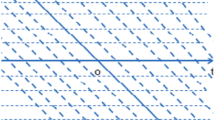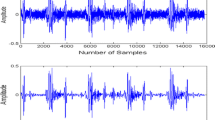Abstract
This study aims to identify a method for classifying signals using their reduced sparse forms with a higher degree of accuracy. Many signals, such as sonar, radar, or seismic signals, are either sparse or can be made sparse in the sense that they have sparse or compressible representations when expressed in the appropriate basis. They have a convenient transform domain in which a small number of sparse coefficients express them as linear sums of sinusoidals, wavelets, or other bases. Although real-valued artificial neural networks (ANNs) have been frequently used in the classification of sonar signals for a long time, complex-valued wavelet neural network (CVWANN) is used for these complex reduced sparse forms of sonar signals in this study. Before the classification, the number of inputs was reduced to 1/3 dimension. Complex-valued sparse coefficients (CVSCs) obtained from the reduced form were classified by CVWANN. The performance of the proposed method is presented and compared to other classification methods. Our method, CVSCs + CVWANN, is very successful as 94.23% by tenfold cross-validation data selection and 95.19% by 50–50% training–testing data selection.









Similar content being viewed by others
References
Gorman RP, Sejnowski TJ (1988) Learned classification of sonar targets using a massively parallel network. IEEE Trans Acoust Speech Signal Process 36:1135–1140
Gorman RP, Sejnowski TJ (1988) Analysis of hidden units in a layered network trained to classify sonar targets. Neural Networks 1:75–89
Shazeer DJ, Bello MG (1991) Minehunting with Multi-layer Perceptrons. In: IEEE conference on neural networks for ocean engineering, pp 57–68
Jing YY, El-Hawary FA (1994) Multilayered ANN architecture for underwater target tracking. In: proceedings Canadian conference on electrical and computer engineering, pp 785–788
Kapanoğlu B, Yıldırım T (2004) Generalized regression neural networks for underwater target classification. In: Neu–Cee2004 2nd international symposium on electrical and computer engineering, North Cyprus, Nicosia, pp 223–225
Chen CH (1992) Neural networks for active sonar classification. In: Proceedings of the 11th IAPR international conference on pattern recognition. Conference B: pattern recognition methodology and systems, pp 438–440
Yegnanarayana B, Chouhan HM, Chandra Sekhar C (1992) Sonar target recognition using radial basis function networks. In: ICCS/ISITA ‘92, ‘Communications on the Move’, Singapore, pp 395–399
Erkmen B, Yıldırım T (2006) Conic section function neural networks for sonar target classification and performance evaluation using ROC analysis. In: Huang D-S, Li K, Irwin GW (eds) Lecture notes in control and information sciences, vol 345. Springer, Heidelberg, pp 779–784
Mosavi MR, Khishe M, Ghamgosar A (2016) Classification of sonar data set using neural network trained by Gray Wolf optimization. Neural Network World 4:393–415
Mosavi MR, Khishe M, Hatam Khani Y, Shabani M (2017) Training radial basis function neural network using stochastic fractal search algorithm to classify sonar dataset. Iran J Electr Electron Eng 13(1):100–111
Jade RV, Verma LK, Verma K (2013) Classification using neural network and support vector machine for sonar dataset. Int J Comput Trends Technol 4(2):116–119
Aizenberg I (2011) Complex-valued neural networks with multi-valued neurons. Springer, Heidelberg, pp 264–265
Nitta T (2004) Orthogonality of decision boundaries in complex-valued neural networks. Neural Comput 16:73–97
Ceylan M, Ceylan R, Ozbay Y, Kara S (2008) Application of complex discrete wavelet transform in classification of Doppler signals using complex-valued artificial neural network. Artif Intell Med 44:65–76
Ceylan R, Ceylan M, Ozbay Y, Kara S (2011) Fuzzy clustering complex-valued neural network to diagnose cirrhosis disease. Expert Syst Appl 38:9744–9751
Sivachitra M, Savitha R, Suresh S, Vijayachitra S (2015) A fully complex-valued fast learning classifier (FC-FLC) for real-valued classification problems. Neurocomputing 149:198–206
Ozbay Y, Kara S, Latifoglu F, Ceylan R, Ceylan M (2007) Complex-valued wavelet artificial neural network for doppler signals classifying. Artif Intell Med 40:143–156
Daugman J (2003) Demodulation by complex-valued wavelets for stochastic pattern recognition. Int J Wavelets Multiresolut Inf Process 1(01):1–17
Saoud LS, Rahmoune F, Tourtchine V, Baddari K (2015) Complex-valued wavelet neural network prediction of the daily global solar irradiation of the Great Maghreb Region. Progr Clean Energy 1:321–339
Saoud LS, Rahmoune F, Tourtchine V, Baddari K (2017) Fully complex valued wavelet network for forecasting the global solar irradiation. Neural Process Lett 45(2):475–505
Nitta T (1993) A back-propagation algorithm for complex numbered neural networks. In: Proceedings of international joint conference on neural networks, pp 1649–1652
Chen G, Zhang X, Wang ZJ, Li F (2015) Robust support vector data description for outlier detection with noise or uncertain data. Knowl-Based Syst 90:129–137
Chatterjee A, Raghavan P (2012) Similarity graph neighbourhoods for enhanced supervised classification. Proc Comput Sci 9:577–586
Jiang L, Cai Z, Zhang H, Wang D (2012) Not so greedy: randomly selected naive Bayes. Expert Syst Appl 39:11022–11028
Kheradpisheh SR, Sharifizadeh F, Nowzari A, Ebrahimpour R (2014) Mixture of feature specified experts. Inform Fus 20:242–251
Jiang L (2011) Random one-dependence estimators. Pattern Recogn Lett 32:532–539
Koshiyama AS, Marley MBRV, Ricardo T (2015) GPFIS-CLASS: a genetic fuzzy system based on genetic programming for classification problems. Appl Soft Comput 37:561–571
Li M, Zhichun W (2009) A hybrid coevolutionary algorithm for designing fuzzy classifiers. Inf Sci 179(12):1970–1983
Tahir MA, Jim S (2010) Creating diverse nearest-neighbour ensembles using simultaneous metaheuristic feature selection. Pattern Recogn Lett 31(11):1470–1480
Sreeja NK, Sankar A (2015) Pattern matching based classification using ant colony optimization based feature selection. Appl Soft Comput 31:91–102
Erkmen B, Yıldırım T (2008) Improving classification performance of sonar targets by applying general regression neural network with PCA. Expert Syst Appl 35:472–475
Ozkan-Bakbak P (2016) Compressive sensing methods in transform domains for radar and sonar signals, PhD Thesis, Yildiz Technical University
Peker M, Sen B, Delen D (2016) A novel method for automated diagnosis of epilepsy using complex-valued classifiers. IEEE J Biomed Health Inform 20(1):108–118
Hänsch R, Hellwich O (2009) Classification of polarimetric SAR data by complex valued neural networks. In: ISPRS workshop high-resolution earth imaging for geospatial information, pp 4–7
Amin MF, Islam MM, Murase K (2009) Ensemble of single-layered complex-valued neural networks for classification tasks. Neurocomputing 72(10):2227–2234
Author information
Authors and Affiliations
Corresponding authors
Ethics declarations
Conflict of interest
There are no conflicts of interests.
Additional information
Publisher's Note
Springer Nature remains neutral with regard to jurisdictional claims in published maps and institutional affiliations.
Rights and permissions
About this article
Cite this article
Özkan Bakbak, P., Peker, M. Classification of sonar echo signals in their reduced sparse forms using complex-valued wavelet neural network. Neural Comput & Applic 32, 2231–2241 (2020). https://doi.org/10.1007/s00521-018-3920-4
Received:
Accepted:
Published:
Issue Date:
DOI: https://doi.org/10.1007/s00521-018-3920-4




